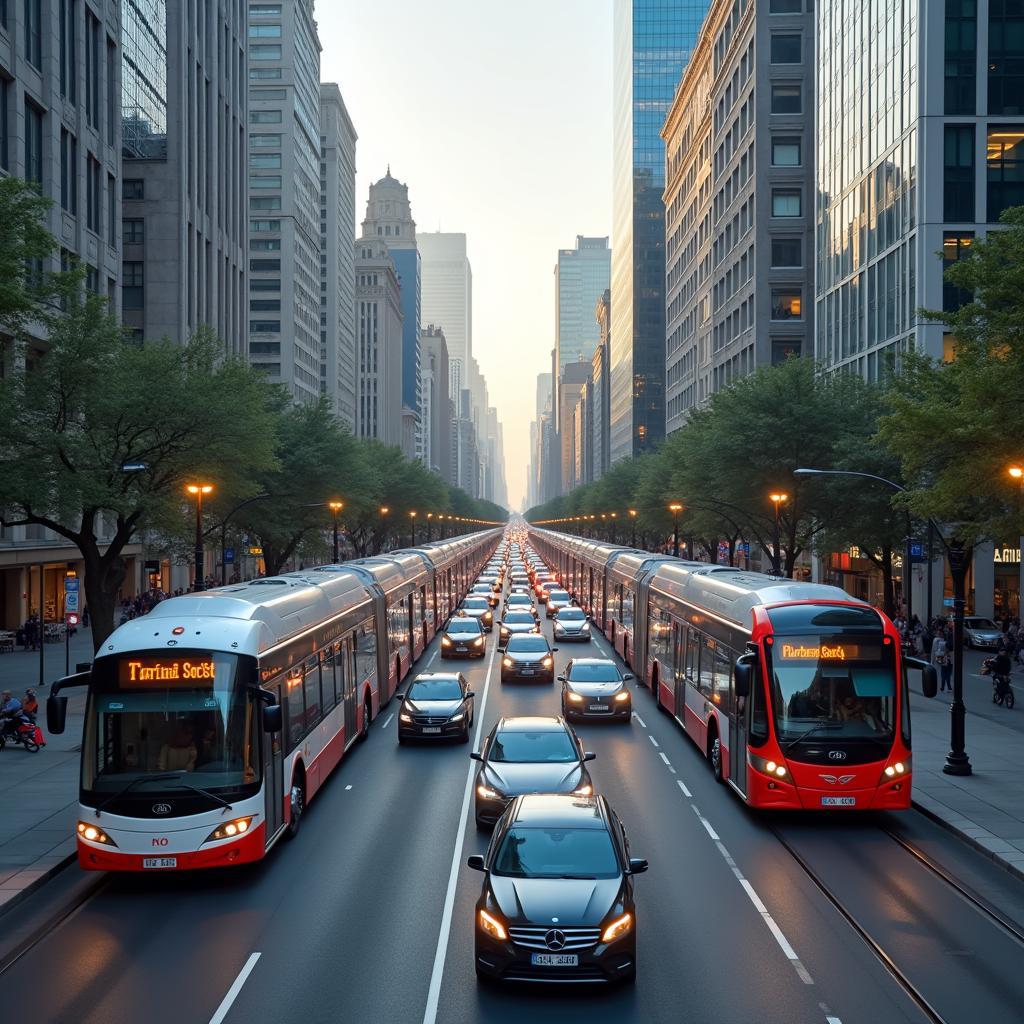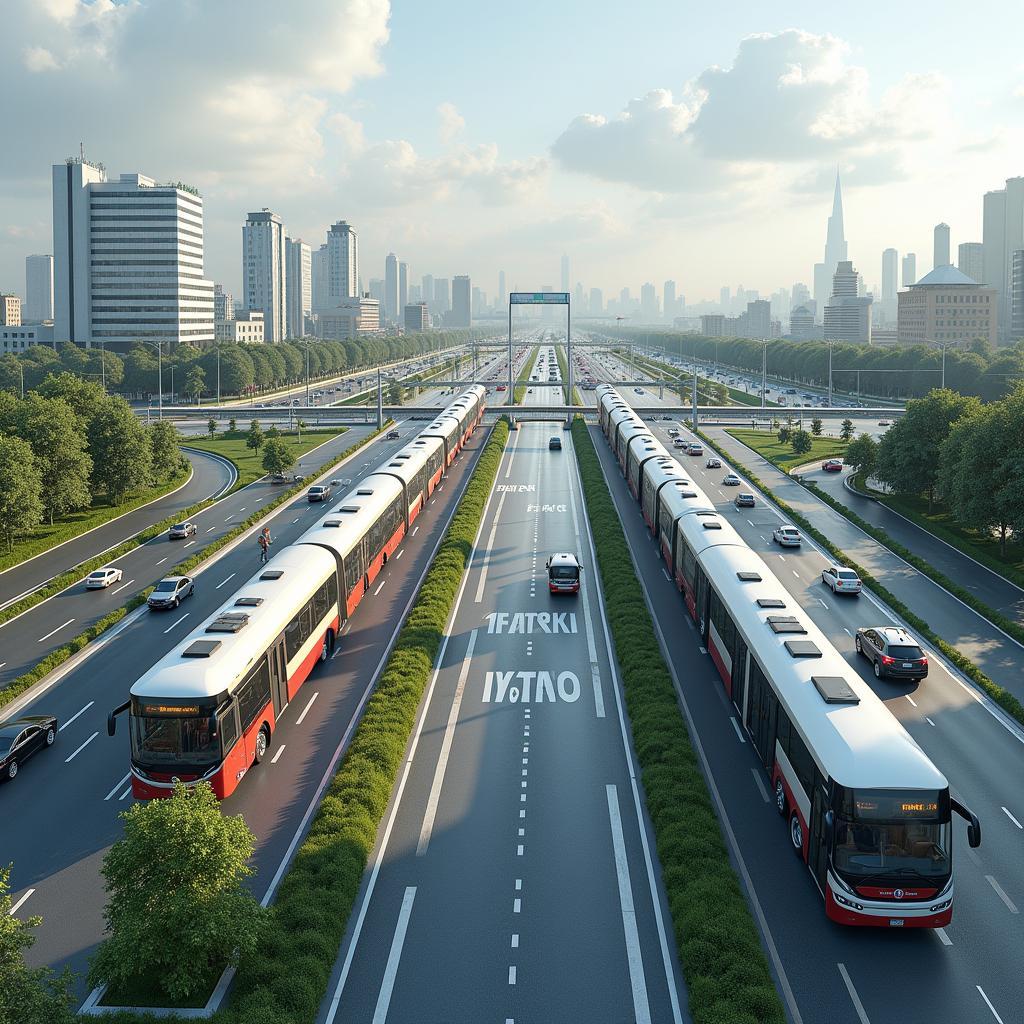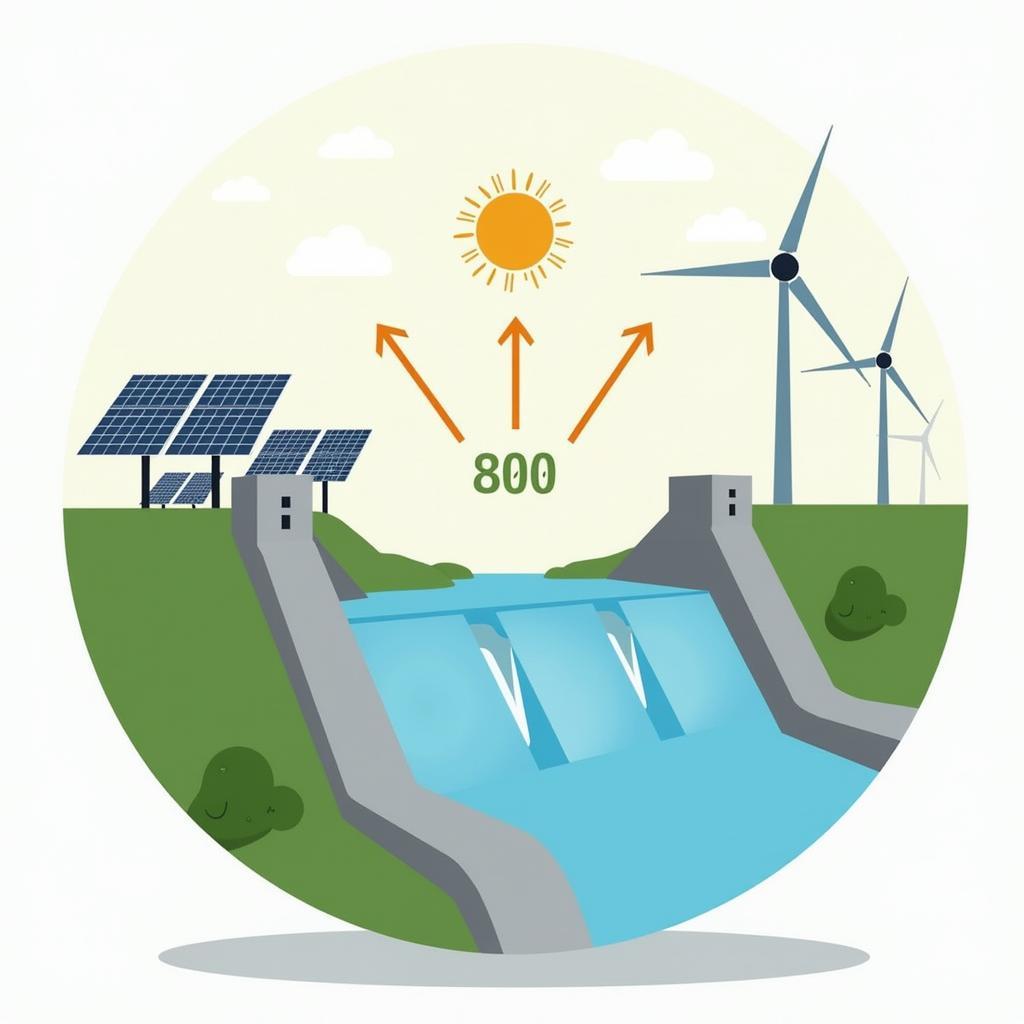Public transport and traffic congestion represent recurring themes in IELTS Writing Task 2, appearing frequently in recent examinations. Based on analysis of past papers, this topic has appeared in various forms, particularly focusing on government policies and urban development. For students preparing for IELTS, understanding how to approach this subject is crucial as it’s predicted to remain relevant in future tests.
Table Of Contents
Analysis of Essay Question
Some people believe that the best way to reduce traffic congestion in cities is to encourage more people to use public transportation. To what extent do you agree or disagree with this statement?
This question requires candidates to evaluate the effectiveness of public transportation as a solution to urban traffic problems. Let’s examine sample responses across different band scores.
 Public transportation helping reduce urban traffic congestion in modern city
Public transportation helping reduce urban traffic congestion in modern city
Band 9 Sample Essay
Traffic congestion has become a critical issue in many metropolitan areas, and I strongly agree that promoting public transportation is one of the most effective solutions to this problem. This essay will examine why increased public transport usage can significantly reduce traffic congestion and how this approach can be successfully implemented.
The primary reason why public transportation can alleviate urban congestion is its capacity to move large numbers of people efficiently. A single bus can transport up to 60 passengers, potentially removing dozens of private vehicles from the road. Similarly, metro systems can move thousands of commuters per hour while occupying minimal road space. For instance, Singapore’s MRT system serves over three million riders daily, demonstrating how mass transit can effectively reduce vehicle density on roads.
Moreover, should governments subsidize the development of electric public transport, the benefits extend beyond congestion reduction. Public transportation systems significantly decrease carbon emissions per passenger compared to private vehicles. Cities like Copenhagen and Amsterdam have successfully implemented comprehensive public transport networks, resulting in reduced traffic and improved air quality.
 Modern public transportation system reducing urban traffic and environmental impact
Modern public transportation system reducing urban traffic and environmental impact
However, for this solution to be effective, authorities must ensure that public transportation is reliable, comfortable, and accessible. This includes implementing frequent services, maintaining reasonable fares, and providing extensive route coverage. Hong Kong’s integrated public transport system exemplifies this approach, with its efficient combination of buses, trains, and ferries serving the vast majority of its population.
In conclusion, encouraging public transportation usage represents a highly effective strategy for addressing urban traffic congestion. While implementation requires significant investment and planning, the long-term benefits for urban mobility and environmental sustainability make it a worthwhile solution.
Band 7 Sample Essay
I agree that promoting public transportation can help reduce traffic congestion in cities. This essay will discuss the advantages of public transport and some challenges in implementing this solution.
Firstly, the role of public transportation in reducing traffic congestion is significant because it can carry many passengers at once. Buses and trains can transport hundreds of people while taking up less road space than individual cars. For example, in many Asian cities like Tokyo and Seoul, efficient public transport systems have helped manage traffic problems effectively.
Additionally, when more people use public transport, there are fewer private vehicles on the roads. This not only reduces traffic but also helps decrease pollution. Many cities have seen improvements in traffic flow after introducing better public transport services. However, the system must be reliable and convenient for people to choose it over their private vehicles.
One challenge is that some people prefer using their own cars because they offer more comfort and flexibility. Also, in some areas, public transport might not be readily available or may not reach all destinations. These issues need to be addressed to make public transportation more attractive to commuters.
In conclusion, while encouraging public transport use is an effective way to reduce traffic congestion, it requires proper planning and implementation to succeed.
Analysis of Band Scores
Band 9 Essay Features:
- Sophisticated vocabulary and complex structures
- Clear organization with well-developed ideas
- Relevant examples and specific details
- Coherent argument progression
- Excellent use of linking devices
Band 7 Essay Features:
- Good vocabulary with some sophisticated terms
- Clear structure but less detailed development
- Basic examples
- Some complex sentences
- Appropriate use of cohesive devices
Key Vocabulary to Remember
- Congestion (n) /kənˈdʒestʃən/ – overcrowding, especially of traffic
- Metropolitan (adj) /ˌmetrəˈpɒlɪtən/ – relating to a large city
- Implementation (n) /ˌɪmplɪmenˈteɪʃn/ – the process of putting a plan into action
- Infrastructure (n) /ˈɪnfrəstrʌktʃə/ – basic physical systems of a country
- Sustainable (adj) /səˈsteɪnəbl/ – able to be maintained at a certain level
- Integrated (adj) /ˈɪntɪɡreɪtɪd/ – combining different elements into a single system
- Accessibility (n) /əkˌsesəˈbɪləti/ – the quality of being easily reached or used
To practice further, consider writing essays on related topics such as:
- The impact of ride-sharing services on urban traffic
- The role of cycling infrastructure in reducing congestion
- Smart city solutions for traffic management
Share your practice essays in the comments section for feedback and discussion.


